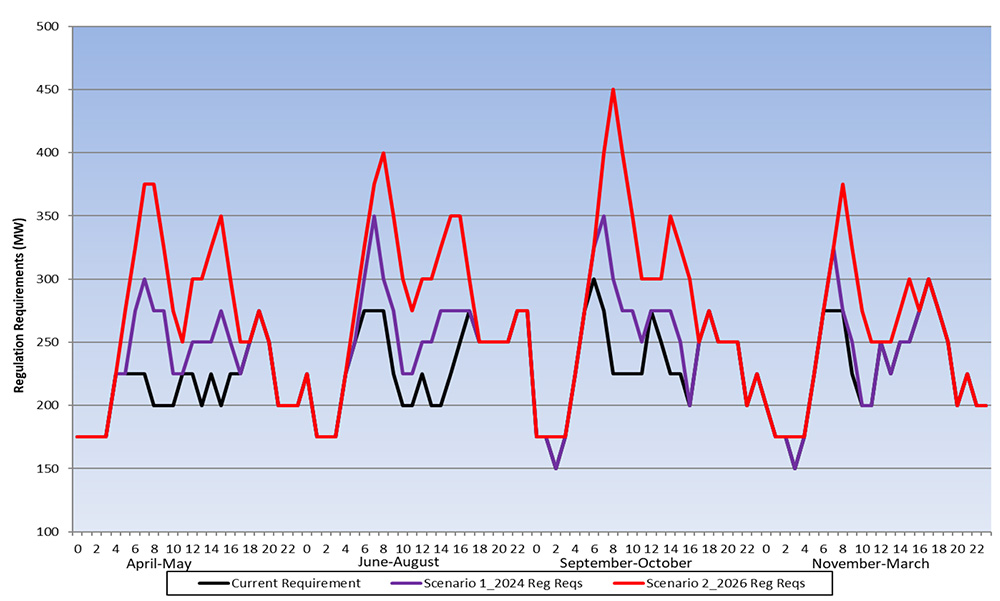[EDITOR’S NOTE: This article has been corrected to report that NYISO said that new transmission into the Southeastern New York reserve region, not New York City, had increased capacity margins for capacity Zone J (NYC).]
Summer 2023 Capacity Assessment
NYISO on Thursday updated the Operating Committee about forecasted summer conditions, assessing that while it has enough capacity for this summer and the near future, margins are declining over time as the grid transitions to clean energy.
Under its baseline forecasted conditions, the ISO will have about 1,400 MW of surplus capacity. In the event of extreme conditions that would decrease that margin as low as ‑2,300 MW, the ISO is covered by up to 3,100 MW of emergency operating actions.
NYISO is currently conducting site visits to assess readiness for summer conditions and ensure potential outages coordinated with ISO staff to minimize any reliability impacts, said Aaron Markham, vice president of operations.
The ISO expects 652.3 MW of generation to be deactivated by July 1, mostly in Zone J (New York City) as a result of New York state’s peaker rule. About 940 MW of new wind and solar generation is expected to come online throughout the summer. Markham also said that new transmission into the Southeastern New York reserve region
resulted in increased margins for the zone.
March Operations Report
NYISO informed the OC that March was a “pretty quiet month.”
The grid experienced a peak load of 19,881 MW on March 14, which Markham said was “quite a bit lower than the capability period peak.” There were no high-level curtailments.
Installed behind-the-meter solar also “keeps ratcheting up,” according to NYISO, with 84 MW added since the last OC meeting.
Inverter-based Resources Standard
The New York State Reliability Council (NYSRC) briefed the OC about a proposed rule establishing minimum requirements for inverter-based resources (IBRs) over 20 MW.
The NYSRC said their draft rule, PRR-151, is necessary because more IBRs have sought interconnection in New York and recent problems seen in other RTOs show that without sufficient regulatory guidance, these resources can have outsized negative impacts across the grid when not performing properly. (See New York Considering Standards for IBRs.)
It asked that comments and questions be sent to herb@poweradvisorsllc.com by this Thursday.
Renewable Regulation Requirements
The committee approved NYISO’s proposed updates to the regulation requirements for renewable resources and their proposed implementation timelines.

The ISO said the updated requirements will help balance bulk power concerns as net load grows and intermittent resources increasingly make up most of the state’s energy mix. (See related story, “Renewable Regulation Requirements,” NYISO Seeking to Increase Emissions Transparency.)
The first set of new regulation requirements, Scenario 1, will be implemented on June 1, and the second set, Scenario 2, will be effective June 1, 2025.
NYISO promised to update its presentation to specify Scenario 2’s implementation date and to provide stakeholders with advanced notices should timelines change.

